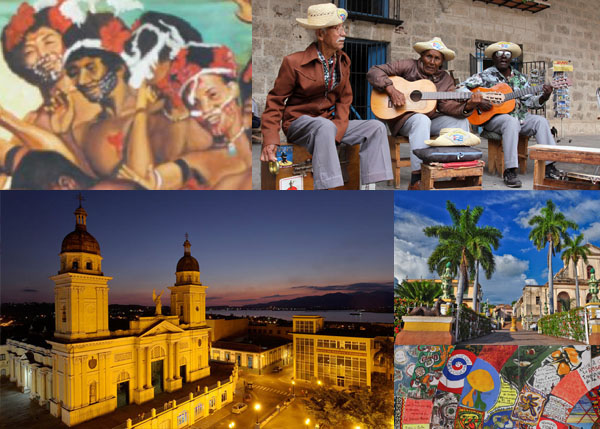10.7.4 The Arcaño and his Wonders orchestra.

Antonio Arcaño Betancourt founded his own orchestra in November 1937, called La Maravilla de Arcaño. This group was formed primarily by some of the musicians who were members of the orchestra known as La Maravilla del Siglo (Wonder of the Century). It also included musicians from the Sport Antillano Dance Academy Orchestra. The group was composed of Antonio Arcaño, who was the conductor and flautist; Jesús López, on piano; Elizardo Aroche and Raúl Valdés, violins; Israel López (Cachao) on double bass; Ulpiano Díaz, on timpani; and Oscar Pelegrín, on güiro. Each musician stood out for their virtuosity, and they achieved a blend that was uncommon for the time; their motto was “an ace on each instrument, and a marvel as a whole.”
During these years, Miguelito García, René Márquez, René Álvarez, Gerardo Pedroso, Rafael Ortiz (Mañungo), and Miguelito Cuní sang in the orchestra.
In its early days, Arcaño’s orchestra included danzones by Silvio Contreras, Luis Carrillo, Ricardo Reverón, Juan Quevedo, and Armando Valdés Torres in its repertoire. The theme music was the habanera “La paloma” by the Spanish composer Sebastián Yradier. The group’s style delighted the dancers, a style that Arcaño developed to the fullest.
The introduction of the tumbadora was an innovation in this type of orchestra and completed the rhythmic base required by the new rhythm Danzón that had emerged at this stage.
The orchestra changed its name to Arcaño y sus Maravillas in the early 1940s. During this period, the singers were eliminated, as they only performed instrumental danzones. The principal composers were Israel López (Cachao), Orestes López, Antonio Sánchez Reyes (Musiquita), Enrique Jorrín, Félix Reina, José Esteban Urfé, Miguel Tachit, and Dora Herrera.
For its radio performances, the orchestra was called Radiofónica, and was made up of the following musicians: Elio Valdés, Antonio Sánchez, Enrique Jorrín, Salvador Muñoz, Félix Reyna, Fausto Muñoz and Pedro Hernández, violin; Raúl Valdés and Miguel Valdés, viola; Orestes López, Rodolfo O’Farrill y Rodríguez, cello; Gustavo Tamayo and Julio Pedroso, güiro; Jesús López, piano; Israel López, double bass; and Eliseo Pozo (El Colorao), tumbadora. Also passing through the orchestra were Nilo Sierra and Silvio Martínez, double bass players, and Chucho Esquijarrosa, timpanist.
Sometimes other instruments such as the celesta, the campanologist and the organ were incorporated into the Arcaño y sus Maravillas orchestra in the search for new timbres.
The Radiofónica only performed on the well-known Emisora Mil Diez. The orchestra’s theme was replaced with the Danzón composed by Antonio Sánchez Reyes: Arcaño y sus Maravillas, from which the last trio, also known as montuno, was performed. In this section of the works, they used the syncopated rhythmic cell that Arcaño christened the new rhythm.
Arcaño’s orchestra popularized versions of many works from the symphonic repertoire, which became a favorite among dancers. These include: Antonio Sánchez Reyes’s Los bombines (Concerto No. 1 for piano and orchestra by Pyotr Ilyich Tchaikovsky); José Esteban Urfé’s María Eugenia (Concerto in A minor for piano and orchestra by Edward Grieg); Orestes López’s Rapsodia en azul (Rapsody in Blue, by George Gershwin); among many others.
The Arcaño y sus Maravillas orchestra played its last dance in Alquízar in 1958.








